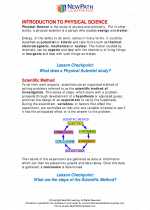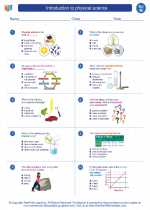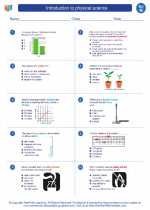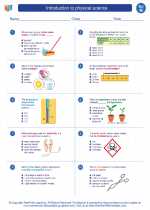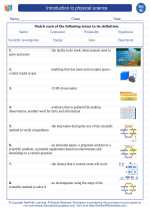Solar Energy
Solar energy is the radiant light and heat from the Sun that is harnessed using a range of ever-evolving technologies such as solar heating, photovoltaics, solar thermal energy, solar architecture, and artificial photosynthesis. It is an abundant, renewable, and clean source of energy that has the potential to meet the world's energy needs.
Key Concepts
- Solar Radiation: The Sun emits energy in the form of electromagnetic radiation, including visible light, infrared, and ultraviolet rays. This radiation is the source of solar energy.
- Photovoltaic Cells: These are semiconductor devices that convert sunlight directly into electricity. When light shines on a photovoltaic cell, it may be reflected, absorbed, or pass right through. The absorbed light generates electricity.
- Solar Thermal Energy: This technology uses the Sun's energy to generate heat. Solar thermal systems collect and concentrate sunlight to produce the high temperatures needed to generate electricity or heat water for residential, commercial, or industrial use.
- Solar Panels: These are devices used to capture the sun's energy and convert it into electricity. They are made up of many smaller units called photovoltaic cells which are made from semiconducting materials such as silicon.
- Solar Architecture: Solar architecture involves designing and constructing buildings that utilize the sun's energy for heating, cooling, and lighting. This includes the use of passive solar design principles and building materials that enhance energy efficiency.
- Renewable Energy: Solar energy is considered a renewable energy source because it is continually replenished by the Sun. Unlike fossil fuels, solar energy is not finite and will not run out in the foreseeable future.
Benefits of Solar Energy
Solar energy offers numerous benefits, including:
- Environmentally friendly and sustainable
- Reduces electricity bills
- Low maintenance costs
- Reduces carbon footprint
- Independence from the grid
- Creates jobs and stimulates the economy
Study Guide
- Define solar energy and explain how it is harnessed.
- Describe the different technologies used to capture solar energy, including photovoltaic cells, solar thermal energy, and solar architecture.
- Explain the process of converting solar energy into electricity using photovoltaic cells.
- Discuss the benefits of solar energy and its impact on the environment and economy.
- Compare and contrast solar energy with other sources of energy, such as fossil fuels and wind power.
- Research and present a case study of a successful solar energy project or initiative.
By understanding the principles of solar energy and its applications, we can work towards a more sustainable and energy-efficient future.
.